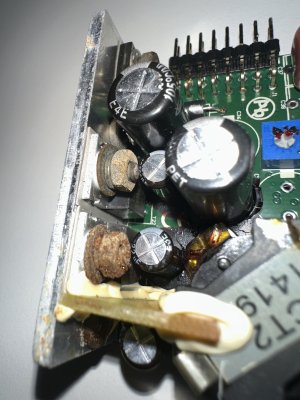So, by your "logic," every, or at least very many, CLRs would have corroded fasteners that attach the FET bodies to heatsinks. And yet, the person who has probably examined the components of more CLRs from the field than anyone else, has never encountered the problem. One user has seen it, which would imply that his specific example was most likely exposed to some corrosive materials. IOW - pay close attention now - not a design issue.
Again, show us some examples of designs that, according to you, are not stupid. Or, better yet, just stop your idiotic trolling on a subject about which you are quite obviously ill-informed.





